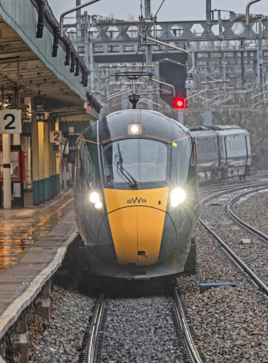Continuing up the organisational ladder, at the heart of the issue is the major project culture that has grown since the mid-1990s of multi-layered organisations delegating and outsourcing technical and commercial risks that only the client can manage.
The previous professional understanding that 50% probability meant that half the work should come in under budget and half over, and over time balance out, was replaced by the mantra of zero acceptable risk of overrun of individual work items - leading to compounded layers of contingency.
Whenever there was a project failure in the ensuing years, the answer was that there needed to be yet more contingency (of both money and time), additional layers of procedure and assurance… and more project managers to oversee these.
Repeatedly adding complexity and cost, hiring ever more project managers and outsourcing the vital decisions on actual design and construction work, sounds a lot like the very definition of insanity.
You might think railway professionals would hold firm and push back, but it seemed that too many - especially in senior positions - were more than happy to accept the extra budget authority (and with it the personal pay rises) and lower risk that came from this approach.
The practice of planning and estimating projects on a worst eventuality basis rewards project managers for avoiding (rather than managing) all commercial and programme risk. This culture then knocks on to planners seeing that the route to risking any overrun is to schedule to take rather longer than needed.
One of the first things a former Network Rail Investment Programme Director once asked, when being shown a raft of major works in Germany, was: how much contingency did they allow in possessions for plant or equipment failures?
The answer, which had some bravura but was based on evidence, was that they declined to employ suppliers who failed. And, no, this wasn’t achieved by having duplicated equipment on standby (except in exceptional situations), but by properly maintaining it in the first place.
As ever, what is measured is what gets attention. The extraordinary performance indicators of money spent per possession was probably intended to drive efficiency. The flaw was that the measure was money - burning cash won prizes, bonuses, promotion.
Which brings the argument full circle: the first thing a client needs is to understand the ‘should be’ efficient cost (not the going rate). We need to reward project managers on delivering the agreed specification at below benchmark cost and time, rather than being lauded for how much money they’ve burned through.
Finally, a plea for everyone to acknowledge the value of meeting the quality specification. It is accepted everywhere else in the developed world that subsequent performance and whole life cost is governed fundamentally by initial quality.
Go and examine the sections of track in the West Coast Upgrade that were installed fully to specification by a client team that withstood the pressure to reduce quality from highly paid programme management ‘partners’ who only wanted to measure “pounds in the ground”.
Fifteen years on, today’s asset managers are still enjoying the low maintenance consequence (and passengers, if they did but know it, the superior ride comfort) of that team’s endeavours.
Build quality really shouldn’t cost more. But poor quality costs the client for ever.












